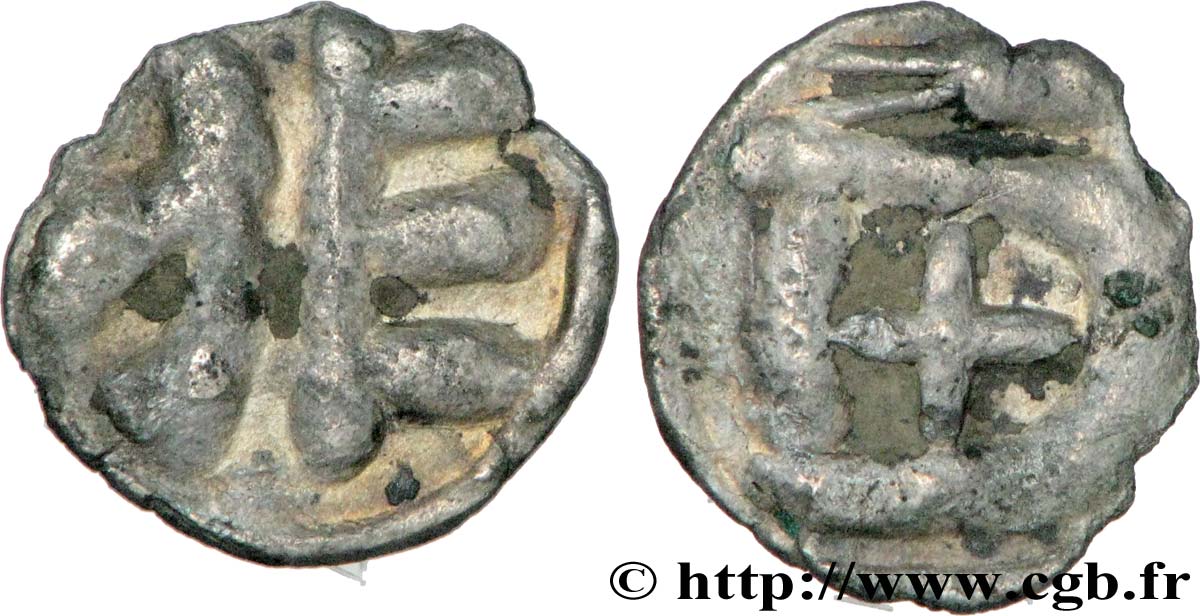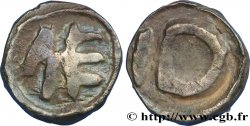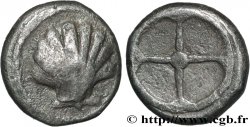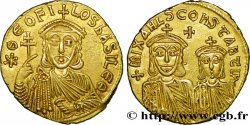bmv_287530 - PAGUS MOSELLENSIS - METTIS - METZ (Moselle) - ANONYMOUS COINAGE Obole à la croisette
Nicht verfügbar.
Artikel auf unserem Online-Shop verkauft (2025)
Preis : 480.00 €
Artikel auf unserem Online-Shop verkauft (2025)
Preis : 480.00 €
Type : Obole à la croisette
Datum: s.m.
Name der Münzstätte / Stadt : 57 - Metz
Metall : Silber
Durchmesser : 12,5 mm
Stempelstellung : 10 h.
Gewicht : 0,68 g.
Seltenheitsgrad : R3
Kommentare zum Erhaltungszustand:
Cette monnaie est frappée sur un flan un peu court et ébréché, avec des types de droit et de revers complets. Patine grise avec de légères concrétions
N° im Nachschlagewerk :
Vorderseite
Beschreibung Vorderseite ME liés dans le champ.
Rückseite
Beschreibung Rückseite D au-dessus d’une barre dans le champ ; une croisette dans le D ; bourrelet périphérique.
Kommentare
Ce denier léger ou obole, correspond au n° 782 de MONNAIES 28, mais avec la la barre au-dessus du D alors qu’elle était dessous sur l’exemplaire de MONNAIES 26.
Il est intéressant de noter le poids léger de ces deux exemplaires qui ont le point commun d’avoir une croisette dans le D ; pourait-il s’agir de la marque de l’obole sur ce monnayage ?
D’après Belfort (p. 365), le D dans le champ du revers a été interprété comme l’initiale de Dagobert II ou III (711-715) ou comme cette de Thierry III (720-737) dont le nom est parfois immobilisé sous la forme Dietricks. L’attribution à Metz tient aux nombreuses découvertes de monnaie à ce type dans la région messine. D’autres proposent le D comme abréviation de «denarius» ; les monnaies avec un A dans le champ pourraient alors correspondre à «argenteus».
This light denarius or obol corresponds to no. 782 of COINS 28, but with the bar above the D while it was below on the copy of COINS 26. It is interesting to note the light weight of these two examples which have the common point of having a cross in the D; could it be the mark of the obol on this coinage? According to Belfort (p. 365), the D in the field of the reverse has been interpreted as the initial of Dagobert II or III (711-715) or as that of Thierry III (720-737) whose name is sometimes immobilized in the form Dietricks. The attribution to Metz is due to the numerous discoveries of coins of this type in the Metz region. Others propose the D as an abbreviation of \\\"denarius\\\"; the coins with an A in the field could then correspond to \\\"argenteus\\\"
Il est intéressant de noter le poids léger de ces deux exemplaires qui ont le point commun d’avoir une croisette dans le D ; pourait-il s’agir de la marque de l’obole sur ce monnayage ?
D’après Belfort (p. 365), le D dans le champ du revers a été interprété comme l’initiale de Dagobert II ou III (711-715) ou comme cette de Thierry III (720-737) dont le nom est parfois immobilisé sous la forme Dietricks. L’attribution à Metz tient aux nombreuses découvertes de monnaie à ce type dans la région messine. D’autres proposent le D comme abréviation de «denarius» ; les monnaies avec un A dans le champ pourraient alors correspondre à «argenteus».
This light denarius or obol corresponds to no. 782 of COINS 28, but with the bar above the D while it was below on the copy of COINS 26. It is interesting to note the light weight of these two examples which have the common point of having a cross in the D; could it be the mark of the obol on this coinage? According to Belfort (p. 365), the D in the field of the reverse has been interpreted as the initial of Dagobert II or III (711-715) or as that of Thierry III (720-737) whose name is sometimes immobilized in the form Dietricks. The attribution to Metz is due to the numerous discoveries of coins of this type in the Metz region. Others propose the D as an abbreviation of \\\"denarius\\\"; the coins with an A in the field could then correspond to \\\"argenteus\\\"








 Berichten über einen Fehler
Berichten über einen Fehler Die Seite drucken
Die Seite drucken Teilen meiner Auswahl
Teilen meiner Auswahl Stellen Sie eine Frage
Stellen Sie eine Frage Einlieferung/Verkauf
Einlieferung/Verkauf
 Details
Details











